As a usual procedure, when I was doing research for my post, utilising the existence of Google Search Engine, the result page came with links of different sites containing similar dishes (looked almost same) but with different names. Although, the occurrence itself is not unusual, but today’s episode did make me think, how the entire world is connected through food.
Though food defines us. Food is one of the aspects through which we get a distinct identity. Food reflects the diverse culture and traditions along with varied geography and climatic factors that condition us. The difference in food habits determines our ethnicity, our belief, our social status, topography and even our economic strata.
Yet there is some commonality in the food across the world that binds us together. More you delve, you will notice the similarities in the basic ingredients, cooking techniques, tastes and beliefs. You will realise that the dish that you think is exclusive to your home, your culture, is equally devoured by someone grew up in opposite side of the world, but calling it by different name. You realise how similar we human beings are, irrespective of our different place of origin, our dissimilar languages and our non-identical cultures, and we are held together by a basic component of life which is food.
And likewise, one of the most common dish that is common to almost all cuisines across the world is Dumplings. The moment we hear or see the word Dumpling, we start imagining piece of dough wrapped around some delicious filling. We think of Himalayan Momos, we think of Maharastrian Modaks, we think of Chinese Dimsums, we think of Polish Pierogi and the list goes on. Keeping the basic component same, each country brings its own culture and twists into its dumpling dish, making Dumpling one of the most familiar, most innovative and admired dish across the world.
My today’s recipe post is also a kind of Dumpling called ‘Bhaja Puli Pithe Or Fried Sweetened Coconut Dumplings’. Before I came across Gujia (a similar dish made with Khoya filling in Northern India), I used to confine the existence of these Pithas only to my home and the people’s home where I had encountered these Pithas. Thankfully the Almighty kept me alive to correct my notion and helped me realise that these ‘Bhaja Puli Pithe Or Fried Sweetened Coconut Dumplings’ have a vast worldwide existence enjoyed by the larger audience.
No need to mention that these crescent shaped Bhaja Puli Pithe taste amazing, and you cannot stop yourself with only one.
Click here and check out more Dessert Recipe.
Recipe: Bhaja Puli Pithe Or Fried Sweetened Coconut Dumplings
Time Taken To Grate Coconut: 31 minutes (Traditional Grater) Time Taken To Knead Dough: 18 minutes Time Taken To Cook Coconut: 12 minutes Time Taken To Fry Pithas: 1 hour 8 minutes Equipment Used: Traditional Coconut Grater, Bowls, Muslin Cloth, Wok, Spatula, Frying Pan, Deep Frying Strainer, Plate, Measuring Cups and Measuring Spoons Yield: 8 Pithas
Ingredients:
- 1 coconut
- 1 and ½ cup maida or all-purpose flour
- 1 cup & ½ teaspoon refined oil
- Water to knead dough
- 1 cup sugar
Method:
- Grate coconut
- Take a bowl and add maida in the bowl
- Pour 1 teaspoon refined oil on the flour and spread the oil with your hand across the flour
- Knead the dough by adding water little by little
- Cover the dough with a muslin cloth
- Now put the container with grated coconut on fire (low flame)
- Add sugar into grated coconut. Stir and cook, till the sugar melts and coconut granules become sticky
- Switch off the flame and keep the wok covered
- Place another pan on another hob
- Heat the pan and heat 1 cup oil in the pan, once the pan is hot
- In the meantime, take small part of kneaded dough and roll to dough ball, (around the size of a small lemon)
- Flatten the dough ball to a circular disc (of around 11 cm) with the help of a rolling pin and board
- Add cooked coconut at the centre of the flattened dough disc as per the size of the disc
- Fold the dough and seal the edges
- Fry the Pitha in hot oil
- Repeat the process for rest of the kneaded dough
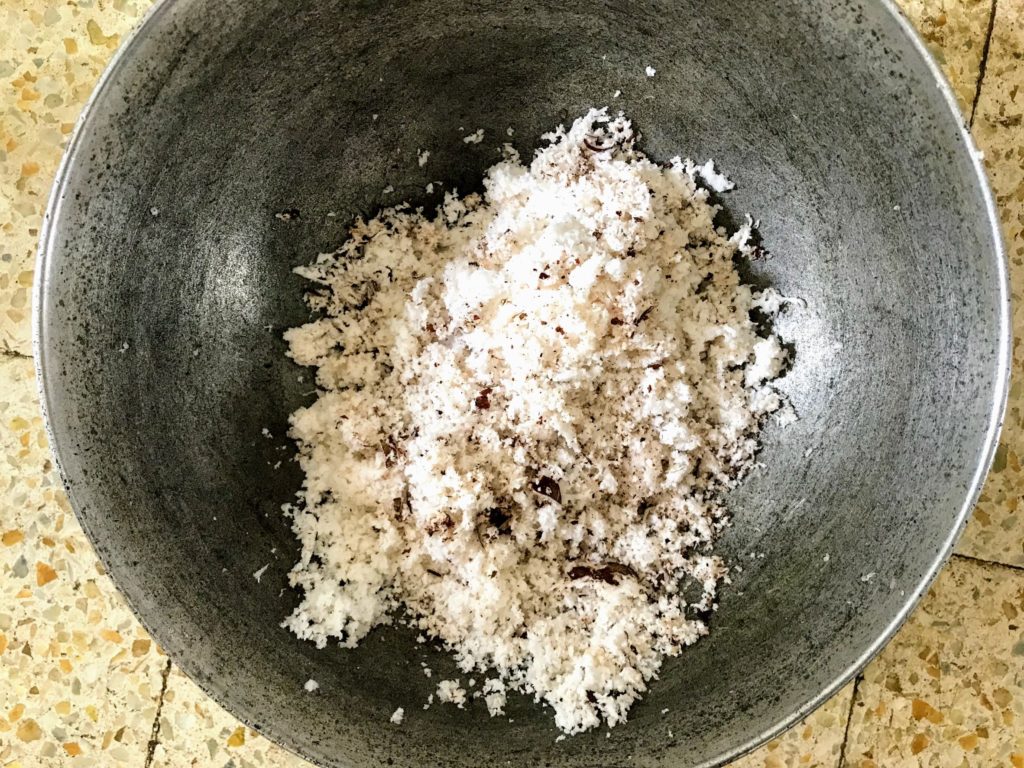
Grate coconut.
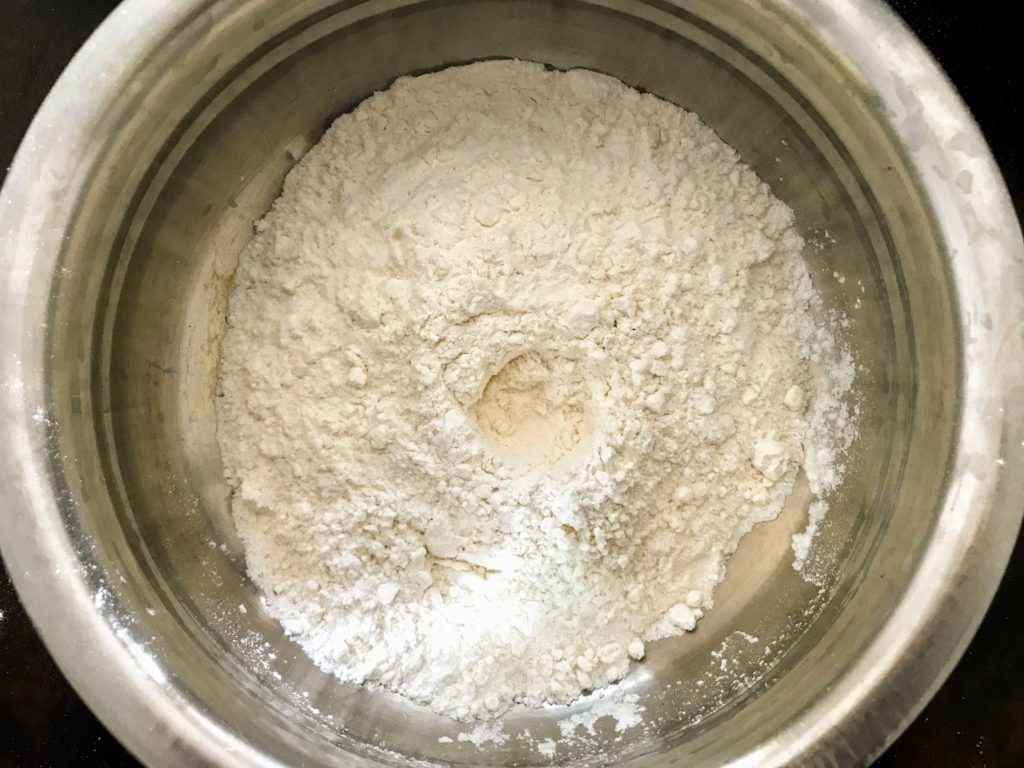
Take all-purpose flour in a container.
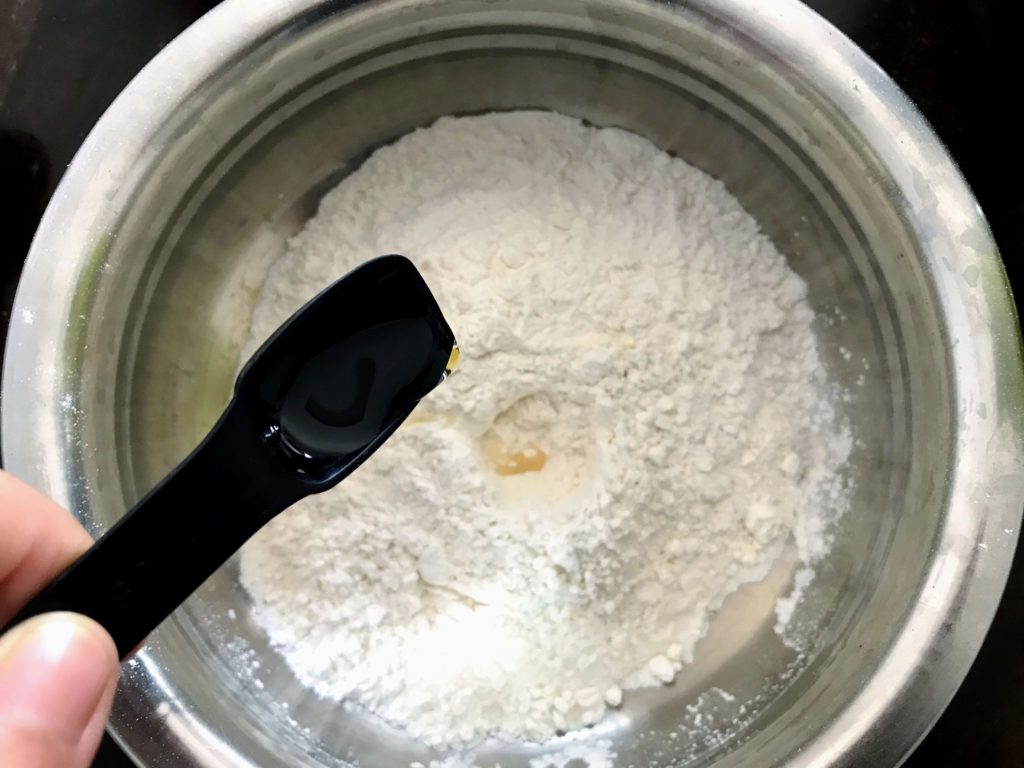
Pour oil on the flour and spread the oil.
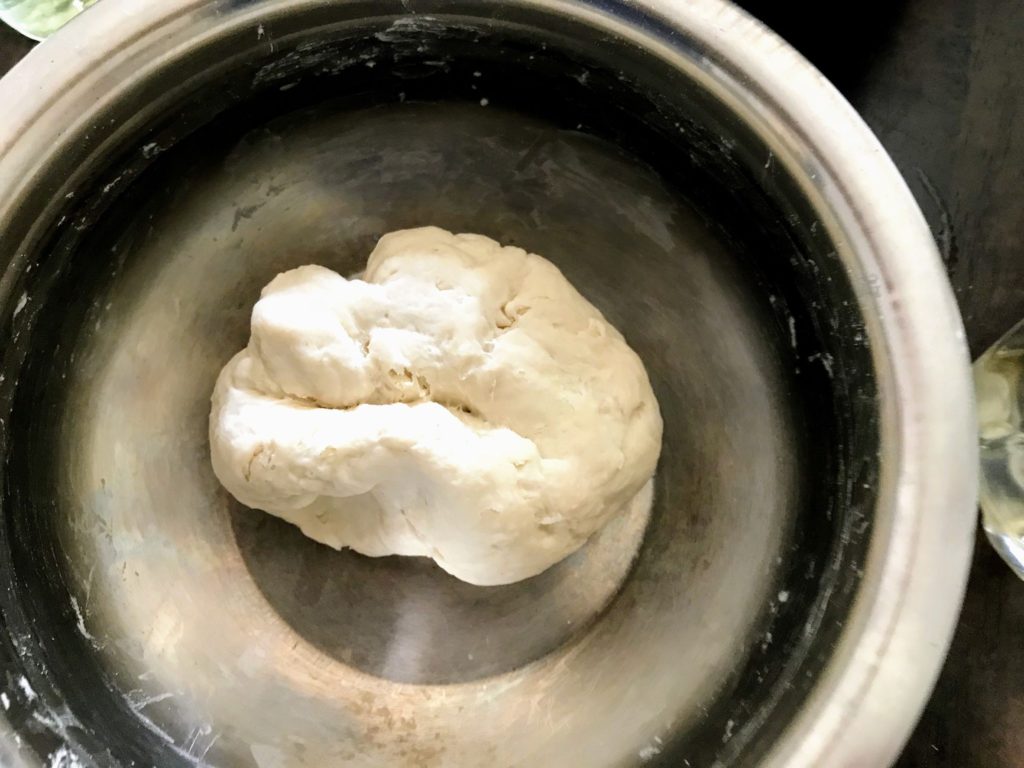
Knead the dough.
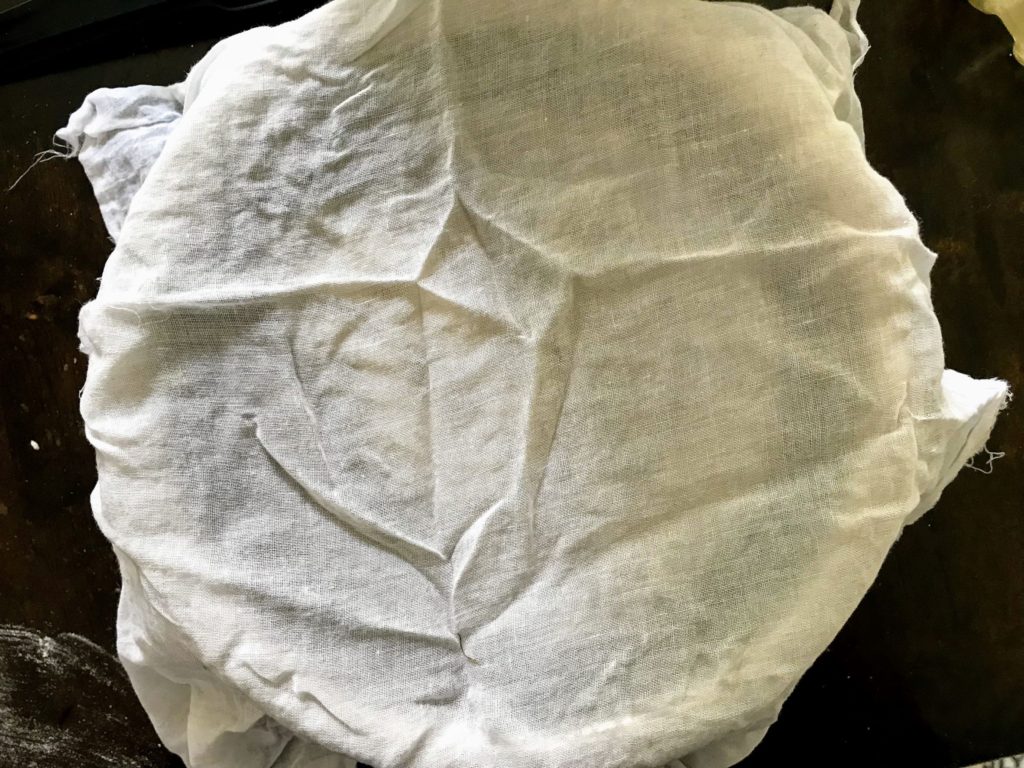
Cover the dough with a muslin cloth.
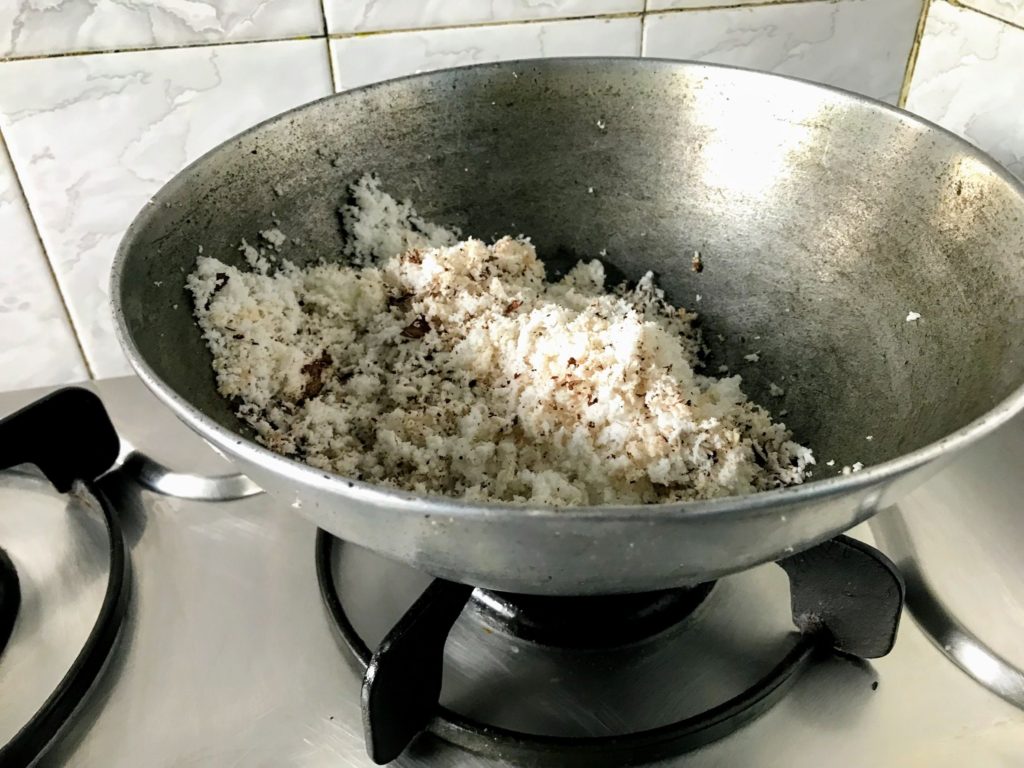
Put the container with grated coconut on fire.
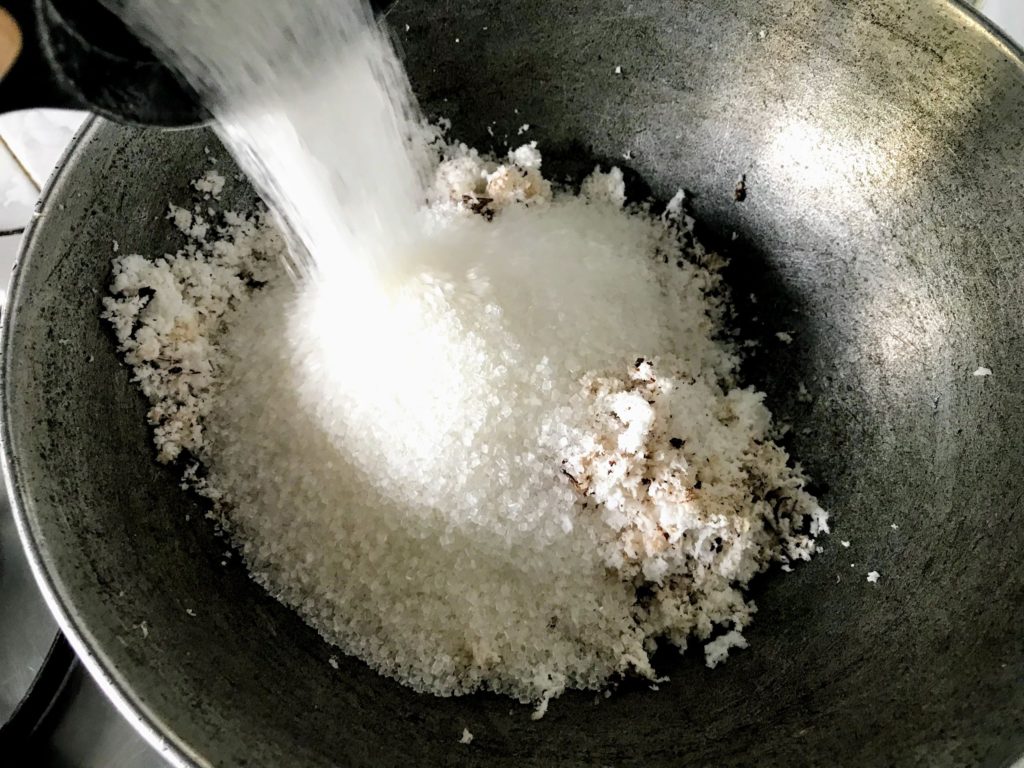
Add sugar.
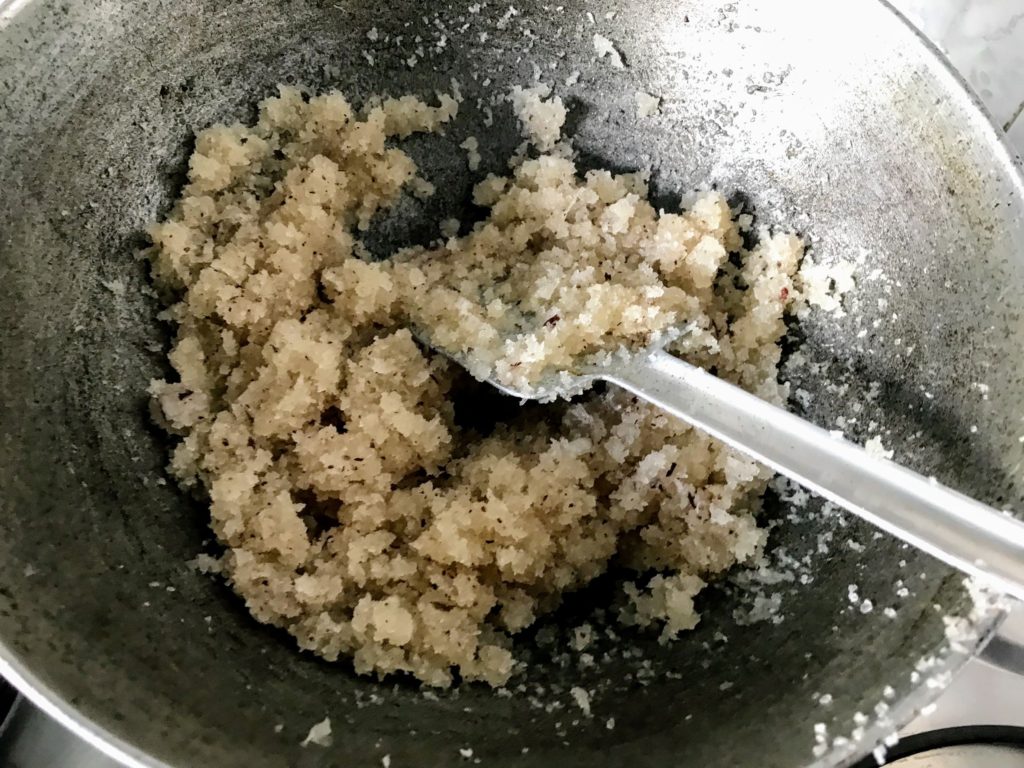
Cook till the sugar melts and coconut granules become sticky.
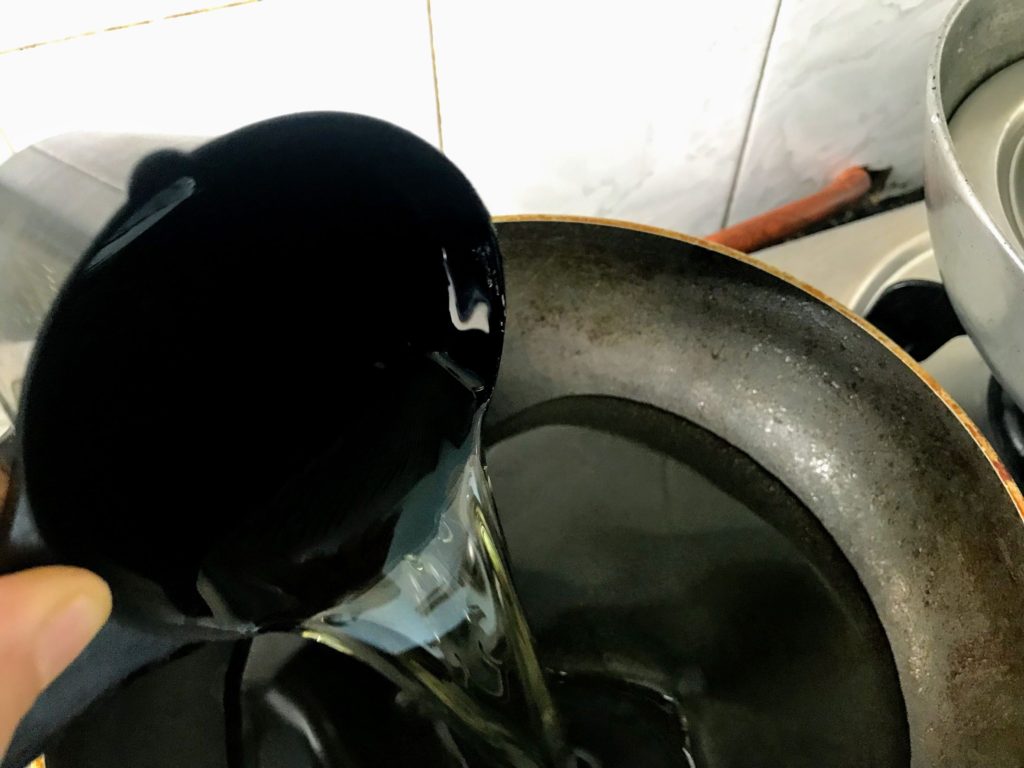
Heat 1 cup oil in another pan.
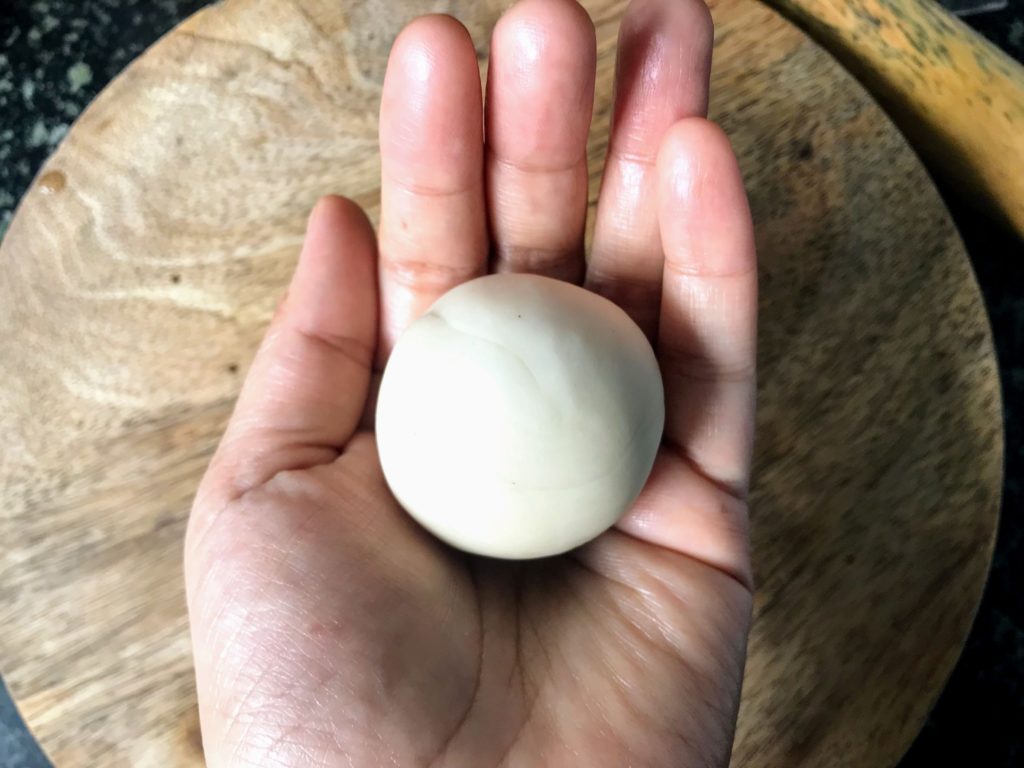
Take small part of kneaded dough and roll to dough ball.
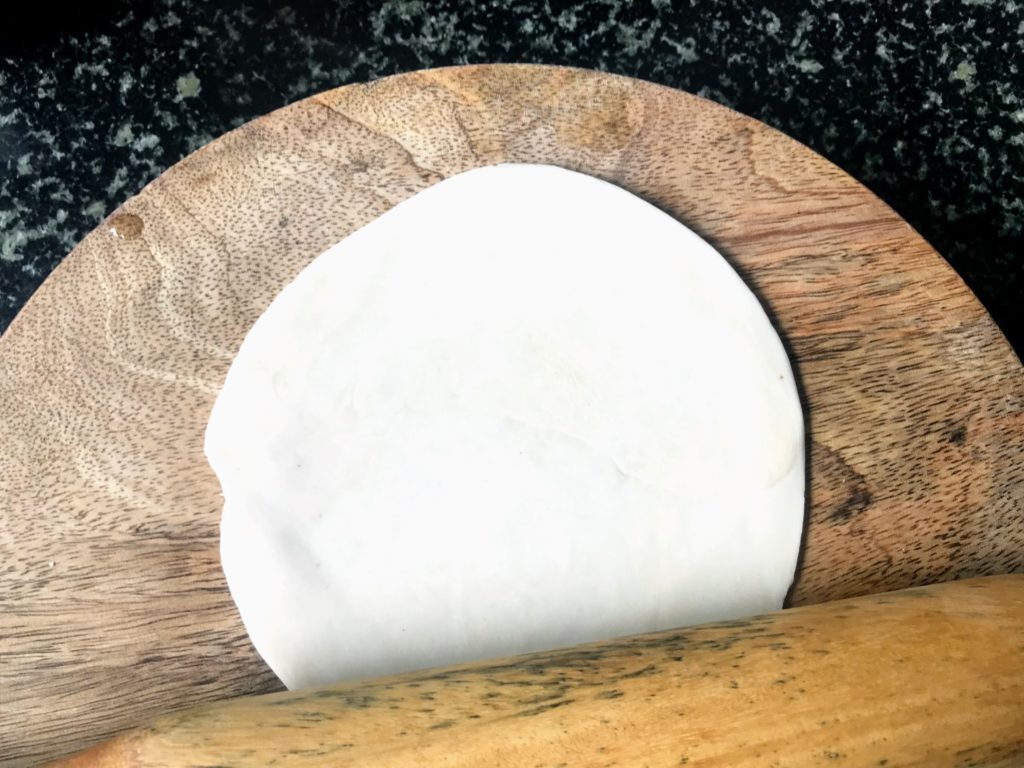
Flatten the dough ball to a circular disc.
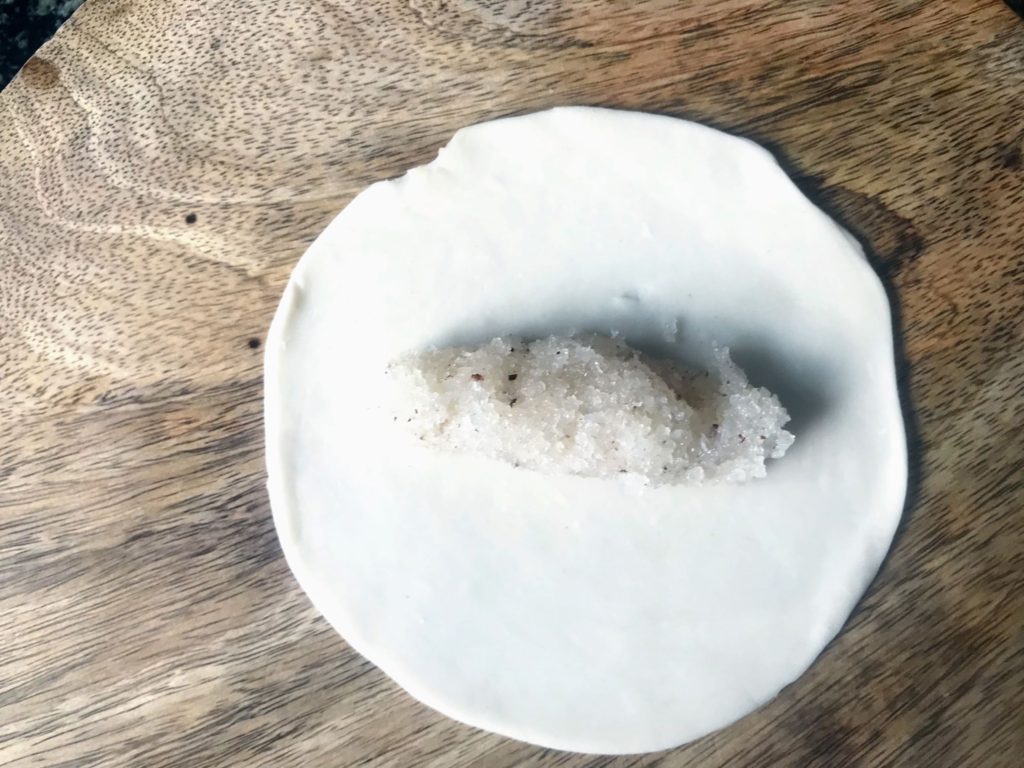
Add cooked coconut at the centre.
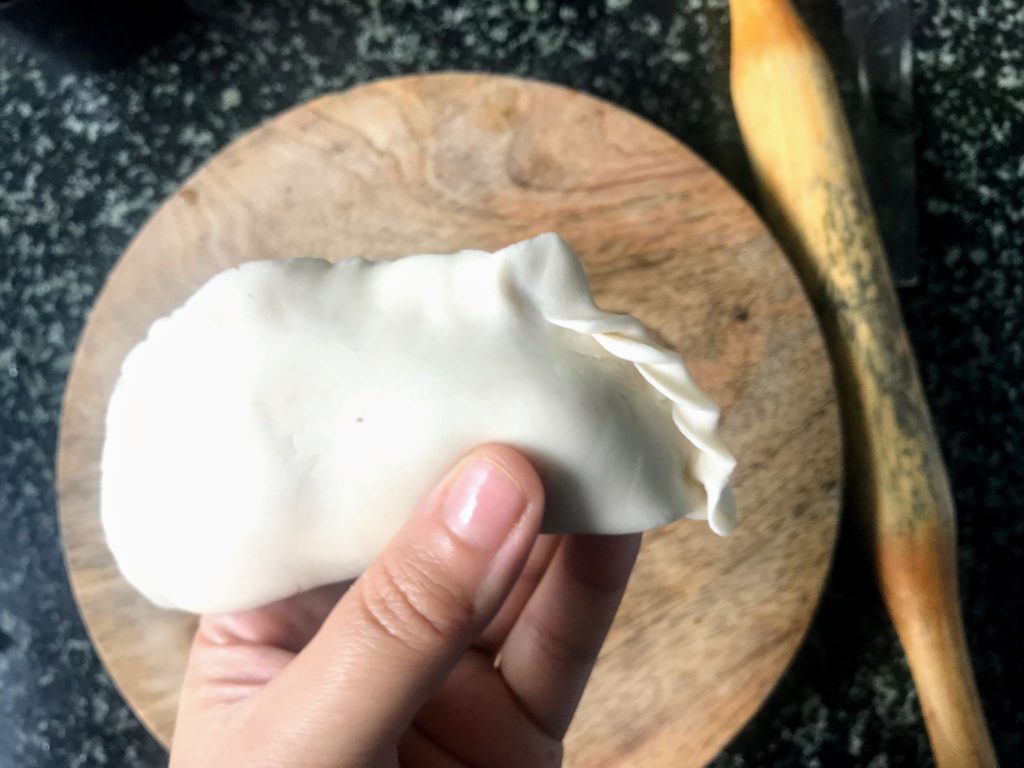
Fold the dough and seal the edges.
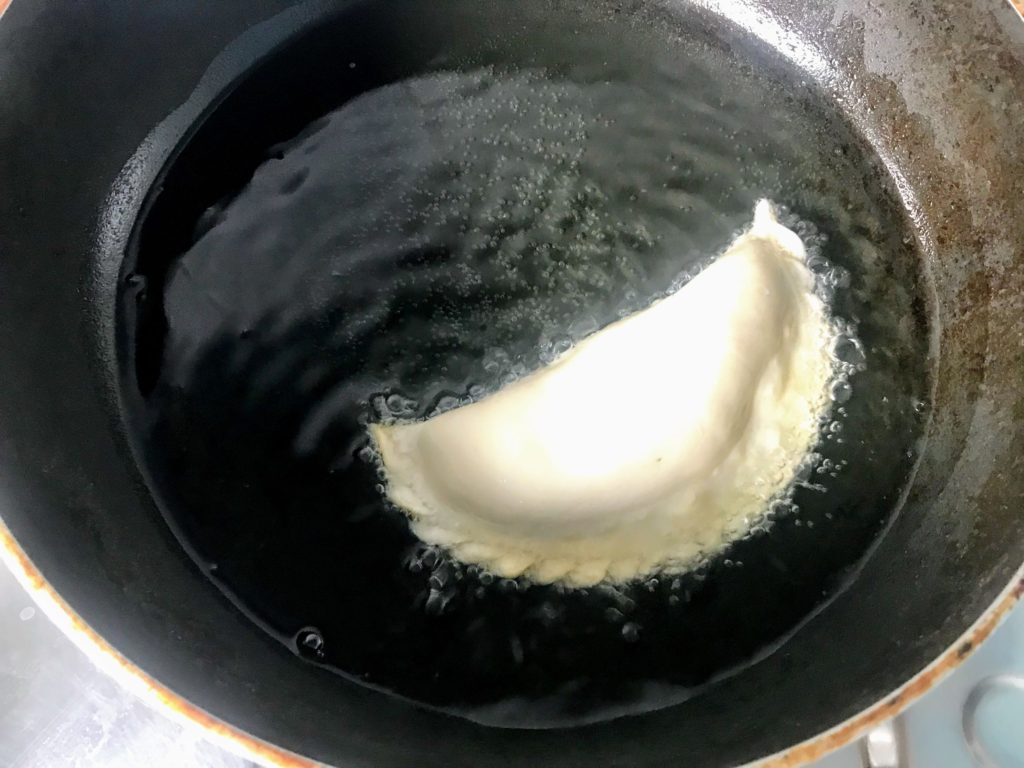
Fry the Pitha in hot oil. Repeat the process for rest of the dough.
Tips:
- In case you are using non-stick pan, heat the pan on low flame
- For smooth rolling of dough, apply little oil on your palm
- You can give design to the Pitha on the edges while folding the edges
- The dough should not be too soft or too hard. Your finger should easily reach the bottom of the dough without getting stuck
- You can add more maida for more number of pithas, as there will be enough cooked coconut left to be used
- Store the leftover refined oil to use later
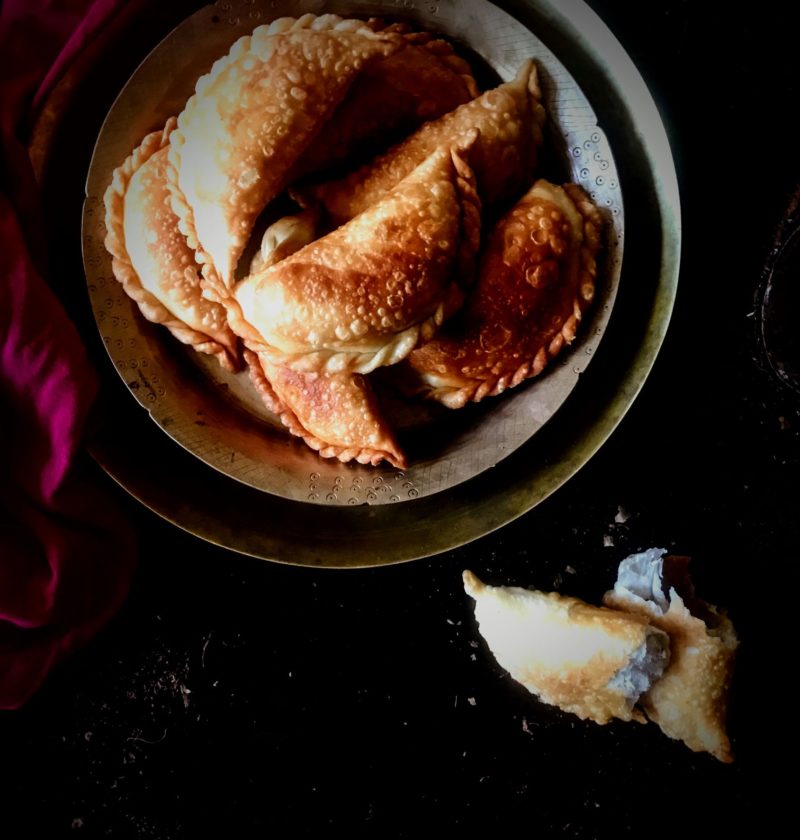
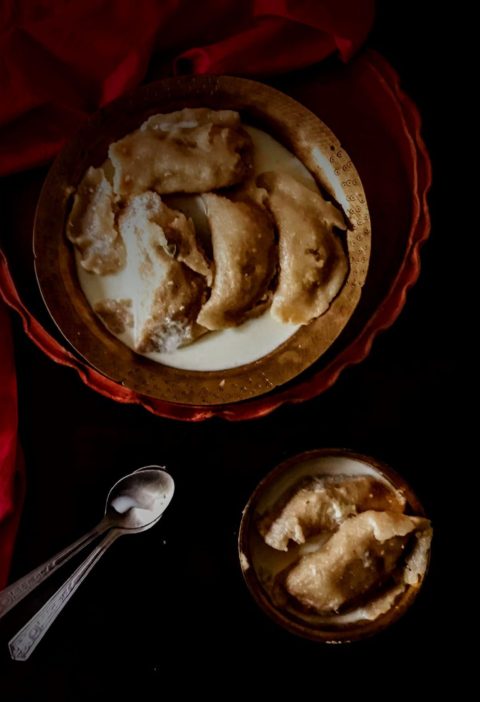
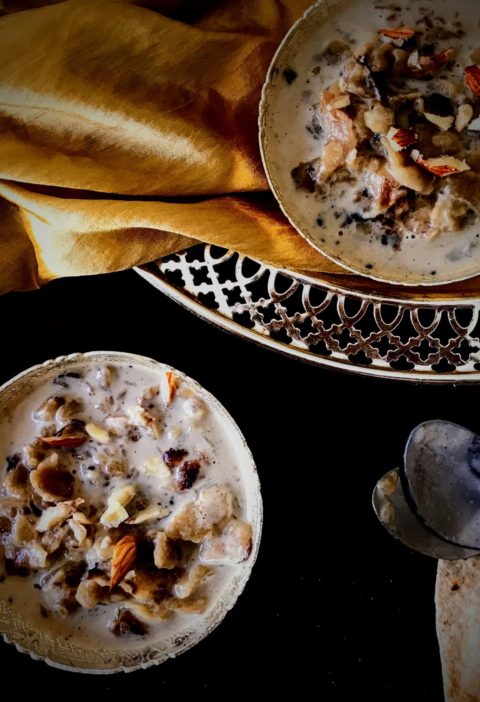
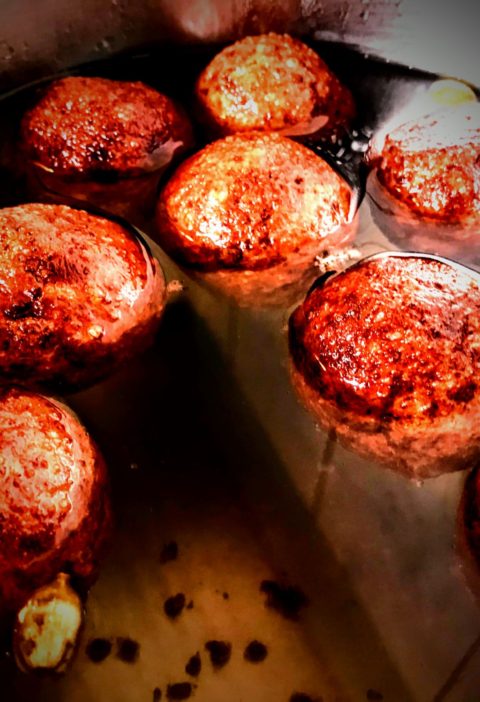
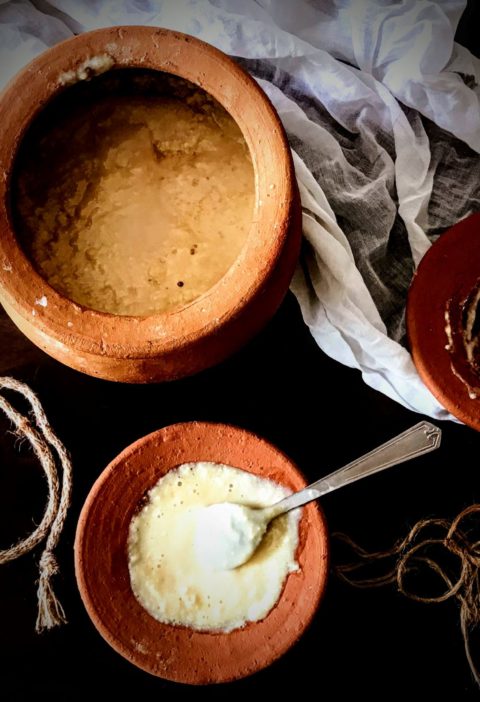
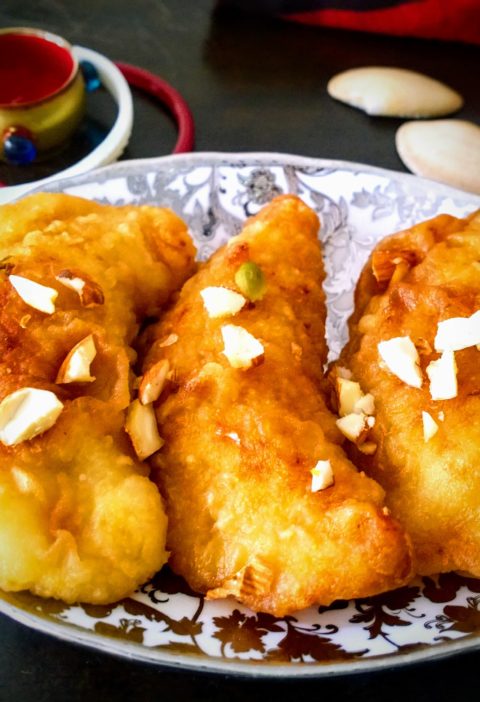
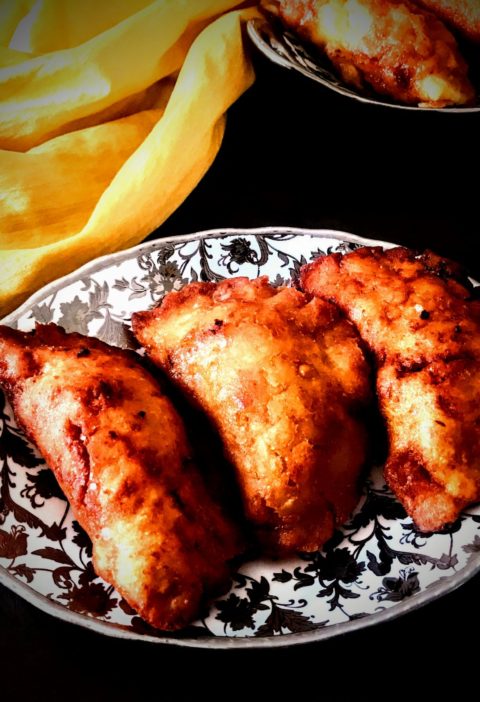
Awesome
Thanks Alpana..:)
Thank You..:)